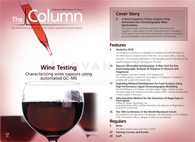Waters and Malvern Announce Polymer Collaboration
Waters Corporation and Malvern Panalytical have announced a co-marketing agreement to advance the analysis of polymers.
Waters Corporation and Malvern Panalytical have announced a co-marketing agreement to advance the analysis of polymers.
The emergence of new and increasingly complex polymers with a broad range of structural and compositional diversity has been a driving force in the development of advanced analytical and separation technologies for polymer characterization. With this collaboration Waters and Malvern hope to address the needs of analysts offering high efficiency columns with low overall system dispersion in a new combination system.
“Waters takes great pride in collaborating with innovative companies like Malvern Panalytical to solve complex molecular characterization challenges. This is an example of two leaders in our respective fields working together to optimize the combination of our technologies in order to help scientists achieve their analytical goals,” said Jeff Mazzeo, Vice President of Marketing, Waters Corporation.
“We believe that researchers will be delighted with the analytical abilities of the combined system,” said Steven Horder, Vice President, Advanced Materials, Malvern Panalytical.
For more information, please visit www.waters.com and www.malvern.com

Measuring Vitamin K1 Concentrations in Dogs with Chronic Enteropathy Using LC–MS/MS
May 14th 2025A joint study between the University of Tennessee (Knoxville, Tennessee) and the University of Pennsylvania School of Veterinary Medicine (Philadelphia, Pennsylvania) compared directly measured vitamin K1 (vitK1) concentrations in healthy dogs and dogs with chronic enteropathy (CE) using liquid chromatography tandem mass spectrometry (LC–MS/MS); they also investigated whether supplementation of vitK1 in dogs with CE would significantly increase vitK1 concentrations.
HPLC 2025 Preview: Fundamentally Speaking (Part 2)
May 14th 2025Michael Lämmerhofer from the Institute of Pharmaceutical Sciences, University of Tübingen, Germany, spoke to JFK Huber Lecture Award winner of 2024 Torgny Fornstedt, professor in analytical chemistry and leader of the Fundamental Separation Science Group, Karlstad University, Sweden, about his pioneering work in high performance liquid chromatography (HPLC) with a focus on fundamentals, ion-pair chromatography, and oligonucleotide applications.

.png&w=3840&q=75)

.png&w=3840&q=75)



.png&w=3840&q=75)



.png&w=3840&q=75)













